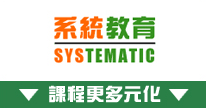課程內容覆蓋現有 Syllabus 和新 Syllabus (2021-05)。
|
學員使用電話或本網頁報名,待本中心確認已為學員留位後,即可使用  繳付學費,過程簡便! 繳付學費,過程簡便!
* 各政府部門可使用 P Card 付款
如使用 P Card 繳付考試費,考試費需另加 1.3% 附加費
*** 質素保證:
免費於任何地點試睇首 3 小時課堂錄影,從而可預先了解導師及教材的質素,才報讀課程來上堂。***
請致電與本中心職員預約。
查看各地點電話
| 旺角 |
2332-6544 |
| 觀塘 |
3563-8425 |
| 北角 |
3580-1893 |
| 沙田 |
2151-9360 |
| 屯門 |
3523-1560 |
| 免費補堂: |
學員可於任何地點補看課堂錄影,從而可銜接往後的課堂! |
| 免費重讀: |
學員可於課程結束後三個月內於任何地點不限次數地重看課堂錄影,從而可反覆重溫整個課程! |
| 課時: |
30 小時 |
| 停課安排: |
若因疫情以致教育局宣佈停課,本中心或會將部份課堂的課堂錄影發放給學員在家觀看,令學員可於停課期間得以繼續進修,而復課後會以已發放課堂錄影之後的一堂來繼續上課。
|
傳統服務的免費補堂或免費重讀,若選擇旺角或觀塘的閒日星期一至四,便需於 6:30p.m. 或之前完成觀看課堂錄影。
|
推介服務:課堂錄影隨時睇 (在家觀看 = 0%,在校觀看 = 100%)
學員使用電話或本網頁報名,待本中心確認已為學員留位後,即可使用  繳付學費,過程簡便!
繳付學費,過程簡便!
注意! 客戶必須查問報讀學校的教育局註冊編號,以確認該校為註冊學校,以免蒙受不必要的損失!
